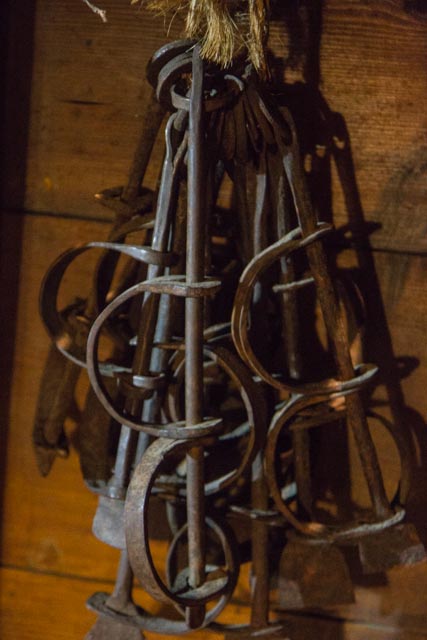 |
| Lovely and well-protected Spanish Waters--there are several anchorage areas and marinas tucked around the big bay |
Then there’s the simple fact that historically Curacao doesn’t get hurricanes—but then we arrived and
suddenly one headed straight this way.
Much of our week has been spent tracking and discussing Matthew’s,
umm, track. As of this morning, it looks like we’re off the hook. Matthew has
ended up going well north of its initial path so rather than getting tropical
storm conditions all we really expect is a good deck wash.
We did opt to move the boat into a narrow channel that offers
better protection from the south and west. The official anchorages offer great
protection in the easterly trades but with a storm on the horizon, the port
officials opened up the entire bay to anchoring.
While we were waiting for the storm to decide what it was
going to do, we decided to dig into a few projects. Our auxiliary Tohatsu 6
Sailpro outboard has always been cranky—not running more than it runs. Evan
broke down and got it a new carburetor—which we assumed would do the trick, but
nada—so it’s off to the mechanic tomorrow.
We also have the material for new dinghy chaps. When we were
in South Africa
we had our old dinghy retubed for about $600. But the tubes are PVC, and they
won’t last well in the tropics. With a flat-calm anchorage at our disposal
we’re going to get sewing. We’ll also keep painting and varnishing.
 |
| Windsurfing lessons for gym class to keep Maia busy and beat the heat |
There’s also been time for fun, now that Maia is mostly
recovered from Zika. Yesterday we toured the city—visiting the forts; the
Curacao liqueur distillery at Landhuis Chobolobo (nothing like bright blue
liqueur for breakfast); and the impressive and sobering Kura Hulanda
Museum. The museum was
high on my list of places to visit. Two of my recent stories have required a
lot of research into the African Slave trade—and the Kura Hulanda museum, which traces
the history of many of Curacao’s residents,
has a sensitive and emotionally powerful display of artefacts from enslaved
Africans.
 |
| being able to touch these manacles made my blood run cold |
After exploring for a few hours we finally managed to get to
Marshe Blue for a local lunch (I drew the line at stewed goat head and curried
sea snake). Evan had goat (the body bits, not the head)—while Maia and I stuck
with the more familiar (and delicious) red snapper.
 |
| local lunch at Marshe Blue |

Each time we set off exploring we grow to like this place a
little more. Our initial impression was Punda was just a big outdoor shopping
mall with a gorgeous facade. But as we’ve spent time wandering the narrow
streets and popping into the historic buildings I find myself intrigued by the
people who decided to settle here. The buildings are all made from coral
stone—which because of their high salt content buildings require constant
replastering and repainting. But somehow—despite the challenge of maintaining
them (and finding a way to make a life in this desert environment) this is an
intriguing and thriving island.
 |
| boats from Colombia and Venezuela bring produce to the floating market |
 |
| hanging out on Galactic |
 |
This week we’ve also had a chance to get to know the Galactic family. If you don’t
follow their blog—give it a read. These folks are hardcore; crossing oceans
with toddlers, sending them to school in the Australs and then sailing to South Georgia... Alisa made the off hand comment that even after crossing the South Atlantic she wasn't in a mad rush to hit the grocery store because she's used to provisioning for seven months at a time and it had only been two! Compared to them, we’ve yet to take a
risk. Makes me think we ought to go around one more time, just to make it
trickier.
 |
| baby Ceilidh |
But while they may be going for twice in a lifetime—for now,
we’ll call once enough. We’ve left some beautiful things in our wake and this
week we learned about one of the most wonderful: our dear friend Lewa in Fiji had her
second son and honored us by naming him after us. We hope the name brings wee
Keffy Ceilidh joy.





















